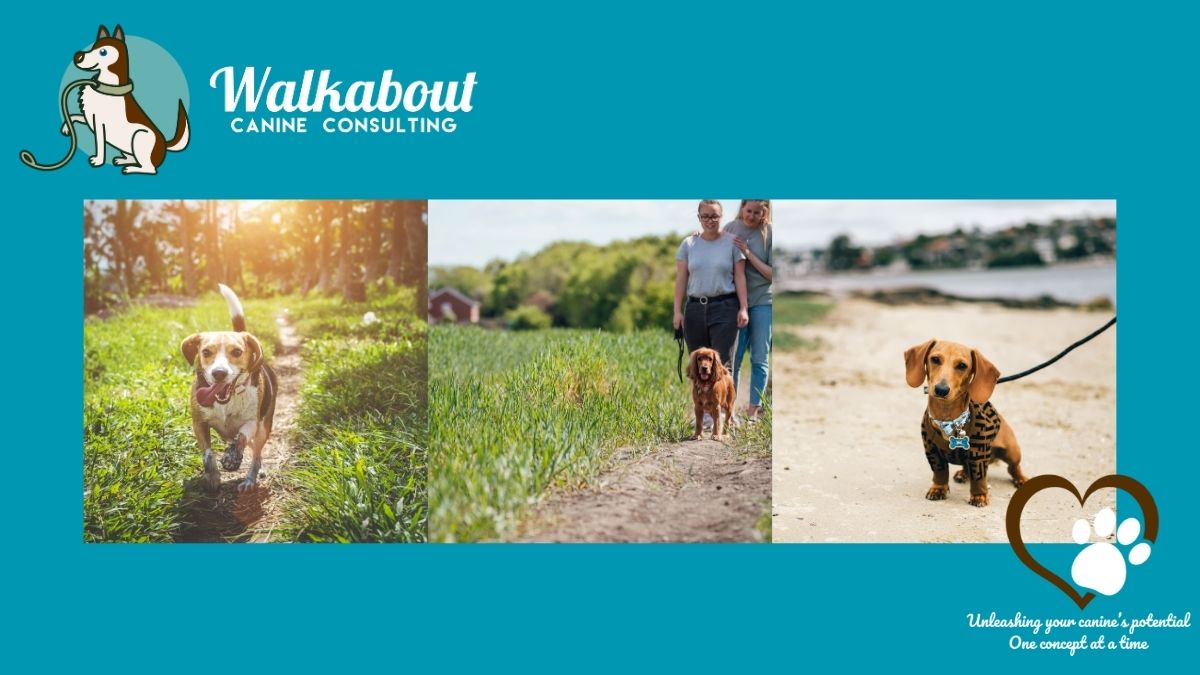Positive Dog Training & Behaviour Blog | Walkabout Canine Consulting
Unleashing your dogs potential, one concept at a time
Prevention Over Panic – Why Safety for Our Dogs Starts with Us

Prevention is protection. Why proactive choices and respectful space can make all the difference in keeping dogs and people safe.
As dog guardians, one of our most important responsibilities is ensuring our dogs are safe—not just from cars or coyotes, but from situations that could create stress, fear, or even risk of injury. Yet sometimes, what we perceive as safe or normal may feel quite different to the person or dog next to us.
Recently, I came across a story that brought this to the surface. It reminded me how perceptions and expectations can differ wildly when it comes to dogs in public spaces. Some folks think nothing of letting their off-leash dog run up to another dog—even if that other dog is leashed, anxious, or reactive. Others feel deeply uncomfortable when they see an off-leash dog at all. And here’s the thing: both viewpoints make sense when you look at them through each person's (or dog’s) lived experience.
In many parts of the world, leash laws are enacted not just for the safety of dogs, but for public safety. A leash, in this case, becomes a boundary, a physical line that prevents a dog from running up to someone who might be afraid or another dog who may not welcome the interaction.
But what about countries or communities where leash laws don’t exist? Often in these places, there's a social contract—an unspoken agreement based on awareness and common sense. Guardians understand their dog’s body language and recall ability. They assess risks before letting their dog off-leash. They recognize that just because their dog is friendly, it doesn’t mean the other dog is. But then some guardians will place all the burden on another dog guardian, which is not always fair. We have a responsibility as a community to understand if another dog might be struggling.
This is a level of situational awareness we need more of. Because the truth is, while some dogs are social butterflies, others are cautious introverts—or survivors of tough experiences. For many of these dogs, having an off-leash dog barrel toward them, even with “friendly” intentions, feels overwhelming or even threatening.
It’s especially hard for leashed dogs who can’t choose how to respond. They’re tethered to a human. If an off-leash dog charges up, the leashed dog might freeze, lunge, or bark—not because they’re “bad,” but because their safety bubble has been popped.
The key here is prevention. If your dog struggles with unexpected greetings or feels insecure around off-leash dogs, then avoiding off-leash areas—where control over the environment is limited—is not just wise, it’s kind. Choosing safer walking times or quieter routes is part of protecting your dog’s emotional well-being.
We cannot control everything. But we can be thoughtful about what we expose our dogs to and when. Prevention isn’t about living in fear. It’s about understanding that we have a duty of care. That “wait and see” is not a training strategy—it’s a gamble. And our dogs shouldn’t have to pay the price when it goes wrong.
So next time you're deciding where to walk, or whether to unclip that leash, ask yourself: What’s the safest, kindest choice for my dog—and for the other dogs and people we might meet today? That one pause for thought might just prevent a whole lot of stress down the line.
 Sylvia Koczerzuk Koczerzuk
Sylvia Koczerzuk Koczerzuk 
